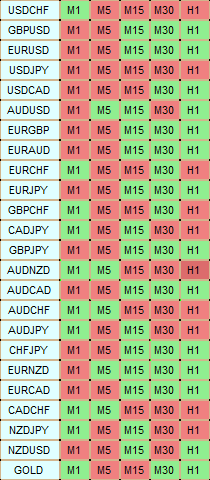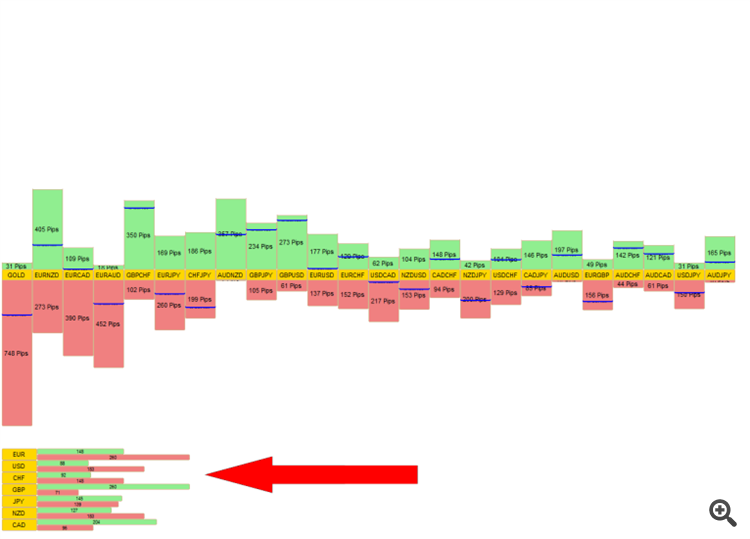Before starting coding a relative stength indicator that compares the major pairs with each other I wonder if there is any good MT4 versions around.
Have tested 2 but are not happy with the results
Not much.
So, any good ideas on how to make an indicator like this?
upto date accurate reliabe
And?
That is just a picture. More info please
There are plentry of free ones around , none with a single answer of what is the strength.
Add the strength of all time frames , giving more emphasis to 1 hour and 4 hour and dailies.............but also the lower time frames for entry

- 2007.09.03
- Simeon Semenych
- www.mql5.com
Before starting coding a relative stength indicator that compares the major pairs with each other I wonder if there is any good MT4 versions around.
Have tested 2 but are not happy with the results
I guarrantee you'll never find one that will make you happy, so it is best for you to go ahead write your own. That's how innovation happens!
i usually add up then divide like so
high[i]= ((iHigh("USDCHF",period,shift)-iOpen("USDCHF",period,shift))+ (iHigh("USDCAD",period,shift)-iOpen("USDCAD",period,shift))+ (iOpen("NZDUSD",period,shift)-iLow("NZDUSD",period,shift))+ (iOpen("AUDUSD",period,shift)-iLow("AUDUSD",period,shift))+ (iOpen("GBPUSD",period,shift)-iLow("GBPUSD",period,shift))+ (iOpen("EURUSD",period,shift)-iLow("EURUSD",period,shift)))/6; low[i]= ((iOpen("USDCHF",period,shift)-iLow("USDCHF",period,shift))+ (iOpen("USDCAD",period,shift)-iLow("USDCAD",period,shift))+ (iHigh("NZDUSD",period,shift)-iOpen("NZDUSD",period,shift))+ (iHigh("AUDUSD",period,shift)-iOpen("AUDUSD",period,shift))+ (iHigh("GBPUSD",period,shift)-iOpen("GBPUSD",period,shift))+ (iHigh("EURUSD",period,shift)-iOpen("EURUSD",period,shift)))/6;
and display like so
however as many said you need to know exactly what strength you are interested in.
for timeframes i usually do like so

And?
That is just a picture. More info please
- Free trading apps
- Over 8,000 signals for copying
- Economic news for exploring financial markets
You agree to website policy and terms of use

Before starting coding a relative stength indicator that compares the major pairs with each other I wonder if there is any good MT4 versions around.
Have tested 2 but are not happy with the results